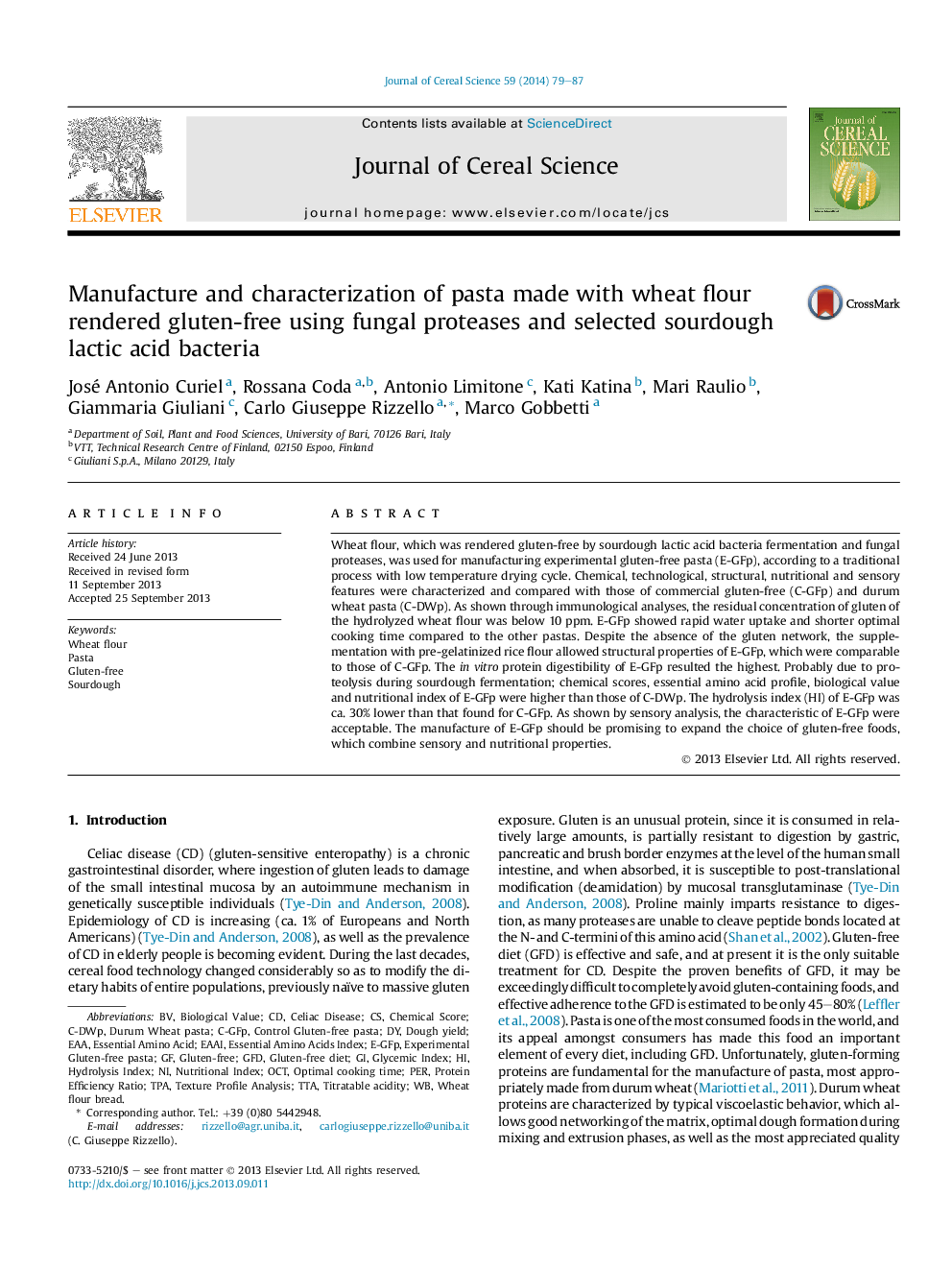| Article ID | Journal | Published Year | Pages | File Type |
|---|---|---|---|---|
| 4515941 | Journal of Cereal Science | 2014 | 9 Pages |
•Selected lactic acid bacteria and fungal proteases were used for the complete degradation of gluten in wheat flour.•A process for making pasta with wheat flour rendered gluten-free (GF) has been set-up.•Experimental pasta was compared with commercial GF and durum wheat controls.•Chemical, structural, and organoleptic features are comparable with those of commercial GF pasta.•Nutritional properties such as digestibility and hydrolysis index are higher than durum wheat pasta.
Wheat flour, which was rendered gluten-free by sourdough lactic acid bacteria fermentation and fungal proteases, was used for manufacturing experimental gluten-free pasta (E-GFp), according to a traditional process with low temperature drying cycle. Chemical, technological, structural, nutritional and sensory features were characterized and compared with those of commercial gluten-free (C-GFp) and durum wheat pasta (C-DWp). As shown through immunological analyses, the residual concentration of gluten of the hydrolyzed wheat flour was below 10 ppm. E-GFp showed rapid water uptake and shorter optimal cooking time compared to the other pastas. Despite the absence of the gluten network, the supplementation with pre-gelatinized rice flour allowed structural properties of E-GFp, which were comparable to those of C-GFp. The in vitro protein digestibility of E-GFp resulted the highest. Probably due to proteolysis during sourdough fermentation; chemical scores, essential amino acid profile, biological value and nutritional index of E-GFp were higher than those of C-DWp. The hydrolysis index (HI) of E-GFp was ca. 30% lower than that found for C-GFp. As shown by sensory analysis, the characteristic of E-GFp were acceptable. The manufacture of E-GFp should be promising to expand the choice of gluten-free foods, which combine sensory and nutritional properties.
